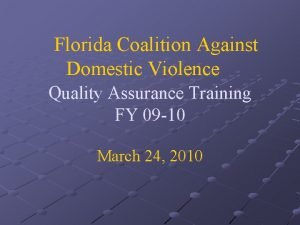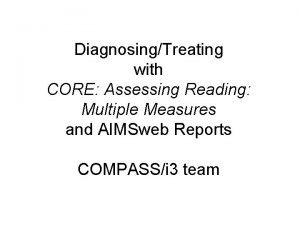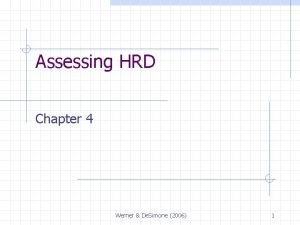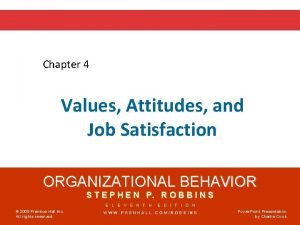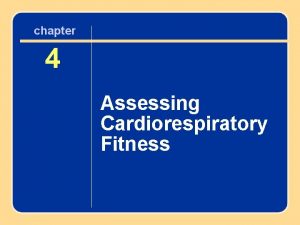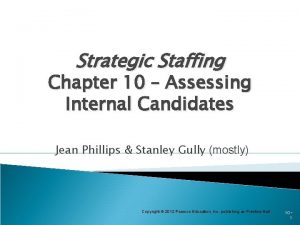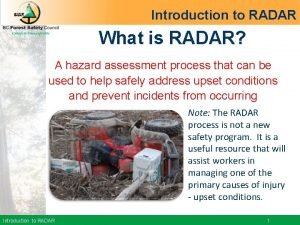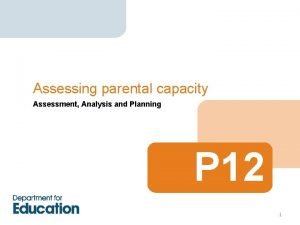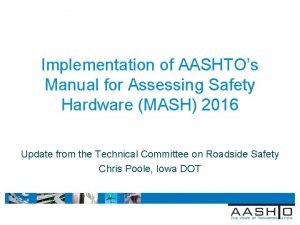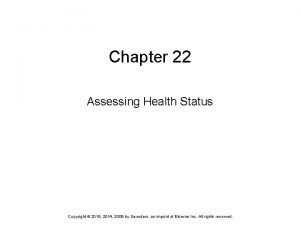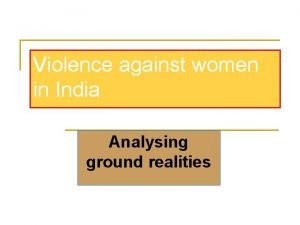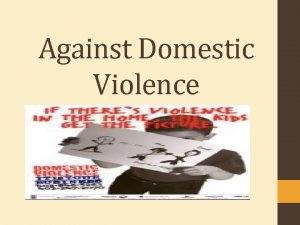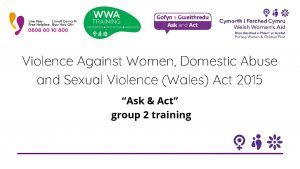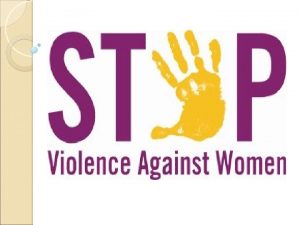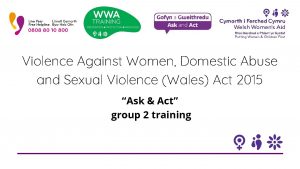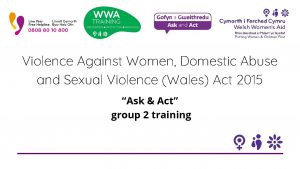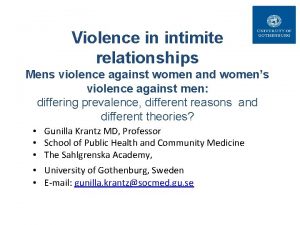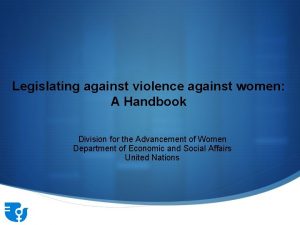The Realities of Violence Against Women Assessing Lethality












































































- Slides: 76

The Realities of Violence Against Women Assessing Lethality and Threats Officer/Victim Safety & Investigating for Power and Control

www. markwynn. com markwynn@edge. net

IACP First Line Supervisor’s Training The IACP’s National Law Enforcement Supervisor Training on Violence Against Women is an unprecedented opportunity for individuals who hold primary responsibility for overseeing first responders to explore current approaches for responding to and investigating the crimes of violence against women, specifically domestic violence, sexual assault, stalking, and human trafficking. The training is not only designed to increase understanding of these crimes, but will instill mentoring, training, and leadership skills. For more information, please contact: 1 -800 -THE-IACP ext. 807 www. theiacp. org

Alberta Police Services and Women’s Shelters Working Relationship Guidelines September 2013 A shared reference that provides information (guidelines/best practices) on the roles and responsibilities of Alberta Police Services and Women’s Shelter staff when working with individuals and families requiring the services of a women’s emergency shelter. A joint initiative of Alberta Royal Canadian Mounted Police, Municipal and First Nations Police Services, Alberta Council of Women’s Shelters, Alberta Human Services and Alberta Justice and Solicitor General.

“A victim of domestic violence calls the crisis line for the first time on average after the fifth assault”. Nashville, Tennessee YWCA Crisis line

Patrolman Robert T. Frazier Nashville City Police Department, Tennessee End of Watch: Friday, April 30, 1875 Patrolman Frazier was shot and killed while attempting to arrest a man for beating his wife on Whiteside Street. When he told the man he would have to accompany him to the workhouse the man refused to go. When Patrolman Frazier again told him he was under arrest the man pulled a small pistol from his pocket and shot Patrolman Frazier, killing him. The suspect fled the scene but was arrested several minutes later by other officers who had responded to the scene. That night an angry mob broke into the jail; seized the suspect; placed a rope around his neck; and hanged him from a nearby suspension bridge. The rope broke and he was killed when he hit the rocks 90 feet below. Patrolman Frazier was survived by his wife.

Realities of VAW Crimes Common characteristics of violence against women crimes • • • Course of conduct vs. incident-based Multiple concurrent crimes Traumatic impact Minimization by victim Underreported Serial nature of perpetrators

Trauma is characterized by the feelings of intense fear, helplessness, and loss of control. A hallmark of trauma is that it typically overwhelms an individual mentally, emotionally, and physically.

Study: Cops more forgetful after chases, altercations Researchers found the group that physically exerted themselves remembered less information By Saundra Young CNN via St. Joseph News-Press Police officers who engage in at least 60 seconds of intense physical energy while involved in a combative encounter may suffer memory loss, according to a newly published study in the journal Psychological Science. Researchers found that officers chasing down a suspect or engaging in a physical altercation with someone can often forget details of the incident, including being unable to identify the suspect from a lineup. The study's lead author, Dr. Lorraine Hope, University of Portsmouth, United Kingdom, said the study's findings are a "warning" to officers, police chiefs and even the court system. "Police officers are often expected to remember in detail who said what and how many blows were received in the midst of physical struggle or shortly afterwards, " said Hope. "The results of our tests indicate it may be very difficult for them to do this. " The study followed 52 police officers - 42 men and 10 women - in Winnipeg, Canada, who had been on the job about 8 years. All exercised regularly and were considered fit and healthy.

Trauma -FETI – Russ Strand – Behavioral Sciences Education and Training Division at the Military Police School Ft. Leonard Wood Forensic Experiential Trauma Interview ▪ Genuine empathy – the victim should never be treated a witness to their own crime ▪ Help me understand what you are able to remember about your experience ▪ Listen don’t talk ▪ Exhibiting signs of neurobiology of trauma ▪ Over four year period military police have adopted technique

IN-SERVICE /ROLL CALL TRAINING VIDEO Adult Sexual Assault: A Trauma Informed Approach - Free A Trauma Informed Approach Developed by the Michigan Domestic and Sexual Violence Prevention and Treatment Board and the Prosecuting Attorneys Association of Michigan. For more information e-mail mdsvptb@michigan. gov. Introduction: This training video was designed so that it can be used in a brief inservice training or two short training sessions as part of roll call or shift change briefings at your agency. The training provides an overview of how trauma impacts victims and how law enforcement first responders can implement a trauma informed response and approach to sexual assault survivors. The training video features Dr. Rebecca Campbell, Chief Tom Tremblay (Ret. ) and law enforcement professionals from across Michigan. The video is available on You. Tube as a training resource for law enforcement and allied professionals: Part I: http: //youtu. be/Cnl. Xz. D 2 p. YSA (13 minutes); Part II: http: //youtu. be/O 0 Om 695 c. Hjg (9 minutes); Part I and II combined: http: //youtu. be/gt. WD 1 XJrh. No (22 minutes).

Realities of VAW Crimes Commonly missed crimes in the context of violence against women • • Stalking Intimate partner sexual assault Strangulation Felony threats Weapons violations Kidnapping Witness Intimidation

Sex Assault You have Options Ashland, Oregon Police 2010 ▪ Traditional methods of investigating sexual assault were contributing to an environment that kept victims from feeling safe enough to report the details of their victimization. Victims were in some cases reporting incomplete or inaccurate information because they were concerned about being believed or they just could not remember. ▪ Ashland focused on two areas –identifying the barriers to reporting faced by the victims and improving the agency’s ability to collect and act on information about serial sexual perpetrators within the community ▪ They found common areas that prevent victims from reporting Traditional interview techniques failed to take into account trauma on victim’s memory Victims fears they will not be believed Unwillingness to identify an offender who is known to the victim Embarrassment Fear of others find out

Free Training www. evawintl. org/olti 40 hour sex assault investigations course online

Free Training www. strangulationtraininginstitute. com The National Strangulation Training Institute (NSTI), funded by the United States Department of Justice, Office on Violence Against Women, is a program of the National Family Justice Center Alliance. Utilizing a network of onsite staff, national faculty and technical assistance providers, the NSTI provides training and technical assistance to family violence professionals throughout the world on Domestic Violence and Sexual Assault Strangulation Crimes.

Nationally prosecutors report that witness intimidation plays a role in 75% to 100% of violent crime committed in gang controlled neighborhoods and is near universal in all cases of domestic violence and other areas of abuse. Victim and Witness Intimidation: New Developments and Emerging Responses, October 1995 NIJ.

Evidence Based Prosecution Consider Forfeiture by Wrongdoing the rule of forfeiture by wrongdoing extinguishes confrontation claims… the right to confront witnesses is forfeited if the accused’s own wrongful conduct is responsible for the inability of the witness to testify giles

Witness Intimidation

Witness Intimidation

the studies show the percentage of false reports converge around 2 -8% in Australia, England, Canada and the US

Rape 1927 -2011 - FBI The longstanding, narrow definition of forcible rape, first established in 1927, is “the carnal knowledge of a female, forcibly and against her will. ” It thus included only forcible male penile penetration of a female vagina and excluded oral and anal penetration; rape of males; penetration of the vagina and anus with an object or body part other than the penis; rape of females by females; and nonforcible rape.

Rape 2013 - FBI “The penetration, no matter how slight, of the vagina or anus with any body part or object, or oral penetration by a sex organ of another person, without the consent of the victim. ”

Underreported Estimates of 1 in 5 women victimized 157, 241, 700 women in the US (2011 census) 31, 448, 340 will experience a completed/or attempted rape 4, 163144 women in Virginia 832, 628 experience a completed/or attempted rape reedy

Realities of VAW Crimes Reasons co-occurring crimes are missed by officers • • • Lack of training Lack of communication Language barriers Insufficient supervisor oversight Personal beliefs and/or biases Minimization RC/MW

Police Officers Frustrations About Handling Domestic Violence Calls Frustration with: Victims Courts Police Organization Negotiating Legal Factors Complexity of Family Issues ▪ RICHARD R. JOHNSON - University of Cincinnati – The Police Journal 2004

Police Officers Frustrations About Handling Domestic Violence Calls Victims who are uncooperative and fail to prosecute are the biggest frustration. Dealing with uncooperative victims. Lack of victims willing to sign a complaint. Victims telling us about incidents that have nothing to do with what is happening right now. Victims who later recant their statements. Victims that don’t follow through with charges or don’t want to file a complaint at all. ▪ RICHARD R. JOHNSON - University of Cincinnati – The Police Journal 2004

Realities of VAW Crimes Impact of missing co-occurring crimes • • • Violence escalates/fatality Victim and officer safety compromised Liability issues Loss of community trust Recidivism/re-victimization Victim hesitation to report further incidents RC/MW

Mass Shootings in United States 2009 - 2014 110 mass shootings* in past five years 57% of mass shootings were related to domestic or family violence. Perpetrators of mass shootings are generally older than perpetrators of gun violence in the U. S. as a whole. While the median age of known overall gun murderers in the U. S. is 26, the median age of perpetrators of mass shootings was 34. In contrast to gun violence generally, perpetrators of mass shootings disproportionately target women. Whereas only 15% of total gun homicide victims are women, 51% of mass shooting victims are women. *The FBI defines a “mass shooting” as any incident where at least four people were murdered with a gun.

Realities of VAW Crimes Officers assaulted and killed 1980 - 2005 224, 900 police officers were physically assaulted while handling domestic violence calls • 780 of those involved the use of firearms • 157 officers were killed on the domestic violence call • Surviving Firearm Assaults at Domestic Violence Calls 2007 Richard Johnson Ph. D and FBI

Realities of VAW Crimes Victims of VAW: • Not going to be a “perfect” victim • Often delay reporting crime • Experience trauma because of the violence • Are often threatened, afraid & reluctant • May feel powerless to stop the violence • May have vulnerabilities that perpetrator will exploit Other? newport

Realities of VAW Crimes Perpetrators of VAW: • Plan their crimes • Ensure there are no witnesses • Are strategic and calculating • Engage in “testing” to select victims • Are often repeat offenders with a series of and/or multiple victims • Escalate violence over time Other?

The FBI reports that between 75% and 90% of all hostage takings in the U. S. are related to domestic violence situations.

Maine Commission on Domestic And Sexual Abuse: Risk Assessment Committee 2014 What is risk assessment? Risk assessment is a procedure whereby we measure some characteristics of a person or situation, and then use that information to predict the likelihood of a future negative event, such as re-assault. Risk assessment tools in the domestic violence field have been developed to assess both an offender’s risk of re-offending, and a victim’s risk of lethal assault Maine Commission on Domestic And Sexual Abuse: Risk Assessment Committee 2014

Why assess for lethality? • • • Reduces the likelihood of future harm to victims, officers, advocates and others Helps us recognize, understand quickly interpret risk factors Helps transfer information across disciplinary lines and fosters collaboration Creates a focused approach for criminal justice intervention A more effective management of police power Promotes effective case management

Effective Lethality Assessment Ø Decide in consultation with other agencies, victims and other service providers Ø Shared Understanding Ø Police, Sheriffs, Prosecutors, Courts, Probation/Parole, first responders, advocates, etc. blue

Blueprint Principles 1. Adhere to an interagency approach and collective intervention goals 2. Build attention to the context and severity of abuse into each intervention 3. Recognize that most domestic violence is a patterned crime requiring continuing engagement with victims and offenders Ensure and swift consequences for continued abuse 5. Use the power of the criminal justice system to send messages of help and accountability 6. Act in ways that reduce unintended consequences and the disparity of impact on victims and offenders

Blueprint for Safety Risk Questions 1. Do you believe the other person could kill or seriously injure you or the children? Why or why not? 2. Is the violence increasing in frequency or severity? 3. Describe the worst or most frightening incident. These questions can surface important information about risk and danger that can be easily obtained at a moment when victims of violence are most open to disclosure.


Lethality Assessment for First Responders mnadv. org The Maryland Network against Domestic Violence has developed the Maryland Domestic Violence Lethality Screen and Protocol for First Responders, which offers practical methods of working with victims to assess and act upon the danger they may face. The MNADV established a statewide Lethality Assessment Committee in Fall 2003, composed of law enforcement officers, a prosecutor, an investigator, a parole and probation agent, domestic violence advocates, and researchers who have done significant work in the area of domestic violence. The committee developed a short screen which is an application of the research of Dr. Jacquelyn Campbell of The Johns Hopkins University, who created the nationally respected domestic violence Danger Assessment, and is a member of the MNADV team. The accompanying protocol developed by the committee is the first of its kind, providing guidance on what to do when someone is assessed to be in high danger.

Pennsylvania LAP State Project January – September 2014 Reporting Period Lethality Screens High Danger Spoke To Hotline Went For Services Did Not Speak to HL Went For Services 2077 1463 1010 662 (66%) 453 (31%) 181 (40%) 1/1/14 - 09/30/14 (70%) (69%) 21 counties 87 police departments Effective middle of January 2015 – 31 counties, 104 police departments Pennsylvania Coalition Against Domestic Violence www. pcadv. org

The Ontario Domestic Assault Risk Assessment (ODARA), a procedure to predict future wife assaults, was developed by the Ontario Provincial Police and the Ontario Ministry of Health http: //www. vawnet. org/

The Ontario Domestic Assault Risk Assessment (ODARA) Prior domestic incident Prior nondomestic incident Prior custodial sentence of 30 days or more Failure on prior conditional release Threat to harm or kill at the index assault Confinement of the partner Victim concern More than one child Victim’s biological child from a previous partner Substance abuse Assault on victim when pregnant Barriers to victim supported

ISBN - 781433804663

Risk/Lethality Assessment Tools The HCR-20 should be used in cases involving any type of general violence. It is particularly useful in cases where it is known, or suspected, that mental health issues may be a factor in perpetrating violence. SARA (Spousal Assault Risk Assessment Guide) This risk assessment tool is designed to be used in intimate partner violence (IPV) cases. B-SAFER (Brief Spousal Assault Form for the Evaluation of Risk). This risk assessment tool is designed to be used in intimate partner violence (IPV) cases. The B-SAFER is designed for police use. SAM (Guidelines for Stalking Assessment and Management) The SAM should be used in cases involving stalking/criminal harassment. RSVP (Risk for Sexual Violence Protocol) The RSVP should be used in cases involving sexual offending.

i. Phone or Android - Designed for ages 16 to 24

Response to Domestic Case first 24 hours – Brooklyn Park, Minnesota 911 Call/Police Response On scene investigation To arrest or not to arrest Scales Interview Patrol Paperwork Cornerstone Advocacy Domestic Packet (Medical Release/Victim’s Domestic Violence Supplement/Victim Information/Advocate Agency Pamphlet) Crime Victim Notification Card Domestic Supplement faxed over to Shelter/Advocacy/Probation within 4 hours. Victim contacted Domestic Violence Coordinator ODARA Assessment/Lethality Knock/Talk Follow up Investigation/Prosecution Assistant Victim Safety Planning/Follow-up Court Support Legal Advocates Brooklyn Park, Minnesota

Women’s Center and Shelter of Greater Pittsburgh RUSafe is a dangerous relationship assessment app developed by Women's Center & Shelter of Greater Pittsburgh and Newton Consulting. The app, which started as a Pittsburgh-based app, is now going national! RUSafe will help users identify if they are in a potentially dangerous situation and connect them to a domestic violence hotline in their area! Pittsburgh Steeler, Will Gay, is the official spokesman for RUSafe!

Wisconsin 2010 Six people who were suspected to have been the primary domestic violence perpetrator were killed by responding Wisconsin law enforcement officers in 2010 Source: Ashland Current

Realities of VAW Crimes Officers assaulted and killed 1999 -2003 143 firearm assault from 39 states involving 131 agencies • 143 assailants and 225 officers fired upon • 43% were hit by gunfire and 14% died • 50% of the assaults occurred at distances greater than 50 feet – most typical shootings occur at 15 feet • Surviving Firearm Assaults at Domestic Violence Calls 2007 Richard Johnson Ph. D – University of Toledo

Realities of VAW Crimes Officers assaulted and killed 1999 -2003 86% of officers were outdoors when first fired upon 46% were first fired upon when they arrived on approached the address • 76% of the assailants were outdoors when they first fired on the officers • They were twice as likely to use a rifle or shotgun • • Surviving Firearm Assaults at Domestic Violence Calls 2007 Richard Johnson Ph. D – University of Toledo

Realities of VAW Crimes Officers assaulted and killed 1999 -2003 Assailants in DV shootings tended to be older, middle class and white • Most were intoxicated, had prior dv offenses, but few were using drugs or had a history of mental illness • Officers on the evening shift were twice as likely to survive than on the day shift – concealment and darkness • Officers wearing body armor where 6 (510%) times more likely to survive shooting • Surviving Firearm Assaults at Domestic Violence Calls 2007 Richard Johnson Ph. D – University of Toledo

Pleasanton, Texas Shooting Profile: Jeremiah Engleton Prior domestic assault and arrest – rolling domestic incident Rehearsed killing his wife – gun to her head Gun collector Prior incident of firing a weapon on a public street – neighbors witnessed but did not report Arrested for domestic assault and blamed officers for wife leaving Deputies assisted in relocating wife from home Pre planned shooting - made false 911 call Moved across street with multiply weapons and ambushed arriving officers Ambushed and wounded Pleasanton PD officer and retired Border Patrol Agent Deputies and local municipal officers on different radio system Committed suicide after gunfight Section One, Handout #2

Shooter lured officers with 911 call October 14, 1999 – Pleasanton, Texas

New Castle County Courthouse Wilmington, Delaware 2 -11 -2013

Arlington Officer Jillian Michelle Smith Killed in Shooting 24 -Year-Old Finished Police Training 2 Weeks Ago Tuesday, 28 Dec 2010, 10: 07 PM CST ARLINGTON, Texas - A rookie police officer was among those killed Tuesday night during a shooting at an Arlington apartment complex. Police confirmed Officer Jillian Michelle Smith was alone and responding to a domestic assault call around 7: 30 p. m. at the Arbrook Park Apartments in the 3800 block of Mahonia Way. Officer Smith shielded the child and was fatally shot They said the suspect in the assault was not expected to be home and that Smith was simply intending to take a report. However, Arlington police representative Tiara Ellis Richard during a news conference on Wednesday said Smith encountered an unexpected and violent situation. Richard said 39 -year-old Barnes Samuel Nettles shot his 29 -year-old girlfriend and then tried to shoot her 11 -year-old daughter. Smith shielded the child and was fatally shot, Richard said. Nettles then killed himself, she said. Read more: http: //www. myfoxhouston. com/dpps/news/122810 -arlington-officer-diesin-shooting_11237179#ixzz 1 tj. El. Mbe 4

Most Dangerous Duties Firearm related deaths – First time in 14 years Driving a Police Car Making an Arrest for Burglary, Robbery, Drugs, etc. Investigating Suspicious Persons/Circumstances Engaging in a Traffic Stop/Pursuit Flying in a Police Aircraft Directing Traffic or Assisting a Motorist Investigating a Domestic Violence Call Investigating other Disturbance Calls Avoiding Vehicles at a Roadblock /Traffic Stop Riding a Police Motorcycle


Randolph County, West Virginia – 5/20/2003 pd


Patrol

Patrol officers will take Mirandized statements from suspects of domestic related crimes Patrol Why patrol? -Fresh incident -Bail arguments -No chance to develop a story -Best practice for handling domestic cases -Other departments are doing this

• Review all domestic violence cases filed with the police department • Analyze the risk of recidivism associated with all domestic violence cases (ODARA). Police Domestic Violence Prevention Coordinator • Completed recidivism and risk assessments and conducted unannounced in-person follow-up with high risk domestic violence victims and offenders. • Work with Brooklyn Park Investigators/Prosecutors to assist in the investigation of cases • • Review evidence and determine evidentiary value for prosecution of crimes (911/Jail Calls)

Domestic Packets


Ontario Domestic Assault Risk Assessment Danger Assessment (ODARA) Developed in Ontario, Canada First empirically tested and validated domestic risk assessment, created from research of nearly 600 cases. Assesses risk for; 1) Further domestic assaults 2) Frequency of assaults 3) Severity of assaults Researchers found that the higher scores on the ODARA can indicate that an accused assaulter will commit more assaults, commit them sooner, and cause more injury (in a range of injury from none to lethality) than an accused with a lower score Although it was not designed to predict risk of lethality, the authors have found a correlation between higher ODARA scores and more severe assaults in the future.



Other uses for ODARA Identification of potential risk to Victim (and children in relationship) Assists in explaining to victims, and their understanding of, potential risk Improve victim engagement with service providers Enable appropriate safety planning commensurate to identified risk for victim.

Knock & talk Ontario Domestic Assault Risk Assessment (ODARA) Score of 7+ Concerns from; Officer Advocate Attorney Probation Domestic Violence Coordinator Knock and Talks are performed weekly 1 -2 Officers And a Domestic Violence Prevention Coordinator

Unannounced Visits to victim’s homes Why? – What are the Goals? 1. 2. Knock & Talk 3. 4. 5. Check on Victim Safety Give victim information about their case and contact with their Cornerstone Advocate if they do not have that information Gather Evidence Make Arrests Victim Cooperation creates a stronger relationship with community members and police. K/T provides victims with the opportunity to speak directly with the DVPC and an officer about their concerns and questions regarding their case

Collaborating Partners with Cornerstone Advocacy 2 full time Advocates housed in the police department Services provided to victim • • Safety Planning Legal System Advocacy – Court Support and a Liaison between victims and prosecutors Other service provided and offered by organization • • • Support and Educational Parenting Support Therapy Housing Resources Rape and Sexual Abuse Services Advocacy

Knock & Talk Program Patrol Response 1. Victim DV Supplements, Evidence Collection, Crime Victim Card, Medical Release, Scales, 12 Cameras from Cornerstone, Future training on i. Phone Heightened Domestic Violence Prosecution Project Successes Monthly DV Meetings 1. Probation 2. Cornerstone – In house Advocates 3. Colich & Associates 4. Police Collaboration with other Agencies

1. Target Immigrant and at Risk Populations Community Outreach Partner with Community Non-profit Organizations Partner with Community Cultural Liaison Community Response Unit - Youth Crime Watch Meetings National Night out Coffee with Cops Community Impact Domestic Violence Awareness Forums 2. Self Defense Classes 3. Citizen’s Academy 4. DV Project Pamphlets 5. Park Pages – BP Website



 Physical violence against women
Physical violence against women Florida coalition against domestic violence
Florida coalition against domestic violence These are the important realities of the human person
These are the important realities of the human person International business chapter 2
International business chapter 2 7 realities of experiencing god diagram
7 realities of experiencing god diagram What is new marketing realities
What is new marketing realities What forces are defining the new marketing realities?
What forces are defining the new marketing realities? 7 realities for experiencing god
7 realities for experiencing god Core assessing reading multiple measures
Core assessing reading multiple measures Assessing a new venture's financial strength and viability
Assessing a new venture's financial strength and viability Assessing hrd needs
Assessing hrd needs Assessing motivation to change
Assessing motivation to change Btec sport unit 3
Btec sport unit 3 Cultural dynamics in assessing global markets
Cultural dynamics in assessing global markets Module 4 topic 1 assessing and managing risk
Module 4 topic 1 assessing and managing risk Task analysis in hrd
Task analysis in hrd The globe framework for assessing cultures
The globe framework for assessing cultures Acceptable audit risk
Acceptable audit risk Assessing cardiorespiratory fitness
Assessing cardiorespiratory fitness Assessing opportunity cost involves
Assessing opportunity cost involves Unit 18 assessing children's development support needs
Unit 18 assessing children's development support needs Assessing value for money
Assessing value for money A nine box matrix requires assessing employees on ________.
A nine box matrix requires assessing employees on ________. Informal reading assessments
Informal reading assessments Cultural dynamics in assessing global markets
Cultural dynamics in assessing global markets Amc math assessment
Amc math assessment Assessing leadership and measuring its effects
Assessing leadership and measuring its effects Assessing the situation
Assessing the situation Ways to address grammar in the writing classroom
Ways to address grammar in the writing classroom Parental capacity example
Parental capacity example Methodology for assessing procurement systems
Methodology for assessing procurement systems Cultural dynamics in assessing global markets
Cultural dynamics in assessing global markets Aashto manual for assessing safety hardware
Aashto manual for assessing safety hardware Assessing the internal environment of the firm
Assessing the internal environment of the firm Assessing health status chapter 22
Assessing health status chapter 22 Module 4 topic 1 assessing and managing risk
Module 4 topic 1 assessing and managing risk Ppst
Ppst Group discussion images
Group discussion images Vẽ hình chiếu đứng bằng cạnh của vật thể
Vẽ hình chiếu đứng bằng cạnh của vật thể Biện pháp chống mỏi cơ
Biện pháp chống mỏi cơ độ dài liên kết
độ dài liên kết Alleluia hat len nguoi oi
Alleluia hat len nguoi oi Các môn thể thao bắt đầu bằng tiếng đua
Các môn thể thao bắt đầu bằng tiếng đua Sự nuôi và dạy con của hổ
Sự nuôi và dạy con của hổ Thiếu nhi thế giới liên hoan
Thiếu nhi thế giới liên hoan điện thế nghỉ
điện thế nghỉ Một số thể thơ truyền thống
Một số thể thơ truyền thống Trời xanh đây là của chúng ta thể thơ
Trời xanh đây là của chúng ta thể thơ Tỉ lệ cơ thể trẻ em
Tỉ lệ cơ thể trẻ em Thế nào là số nguyên tố
Thế nào là số nguyên tố Vẽ hình chiếu vuông góc của vật thể sau
Vẽ hình chiếu vuông góc của vật thể sau Các châu lục và đại dương trên thế giới
Các châu lục và đại dương trên thế giới Thế nào là hệ số cao nhất
Thế nào là hệ số cao nhất Hệ hô hấp
Hệ hô hấp Hát kết hợp bộ gõ cơ thể
Hát kết hợp bộ gõ cơ thể ưu thế lai là gì
ưu thế lai là gì Tư thế ngồi viết
Tư thế ngồi viết Cái miệng nó xinh thế chỉ nói điều hay thôi
Cái miệng nó xinh thế chỉ nói điều hay thôi đặc điểm cơ thể của người tối cổ
đặc điểm cơ thể của người tối cổ Mật thư anh em như thể tay chân
Mật thư anh em như thể tay chân Voi kéo gỗ như thế nào
Voi kéo gỗ như thế nào Tư thế ngồi viết
Tư thế ngồi viết Thẻ vin
Thẻ vin Thơ thất ngôn tứ tuyệt đường luật
Thơ thất ngôn tứ tuyệt đường luật Các châu lục và đại dương trên thế giới
Các châu lục và đại dương trên thế giới Từ ngữ thể hiện lòng nhân hậu
Từ ngữ thể hiện lòng nhân hậu Diễn thế sinh thái là
Diễn thế sinh thái là Vẽ hình chiếu vuông góc của vật thể sau
Vẽ hình chiếu vuông góc của vật thể sau Giọng cùng tên là
Giọng cùng tên là 101012 bằng
101012 bằng Tư thế worm breton
Tư thế worm breton Lời thề hippocrates
Lời thề hippocrates Khi nào hổ con có thể sống độc lập
Khi nào hổ con có thể sống độc lập đại từ thay thế
đại từ thay thế Quá trình desamine hóa có thể tạo ra
Quá trình desamine hóa có thể tạo ra Cong thức tính động năng
Cong thức tính động năng

